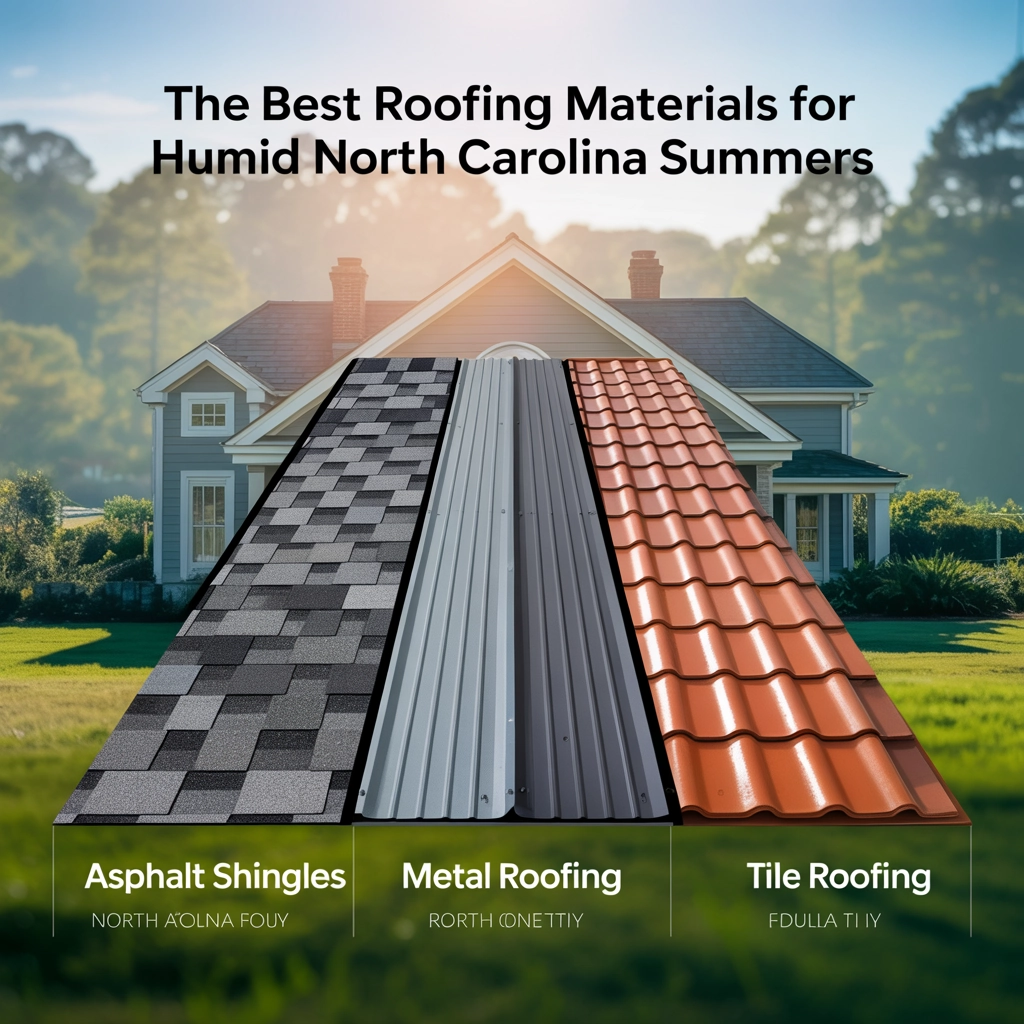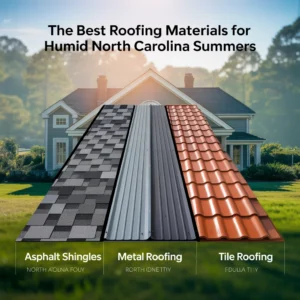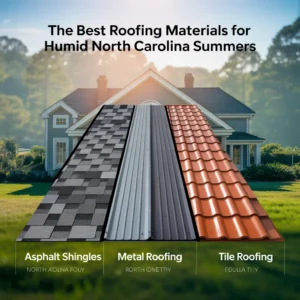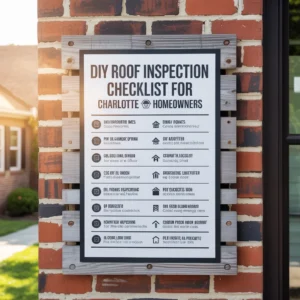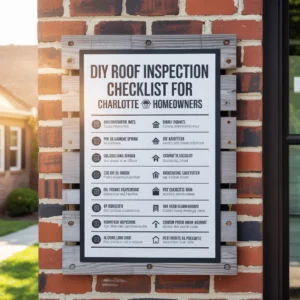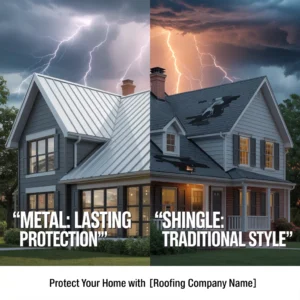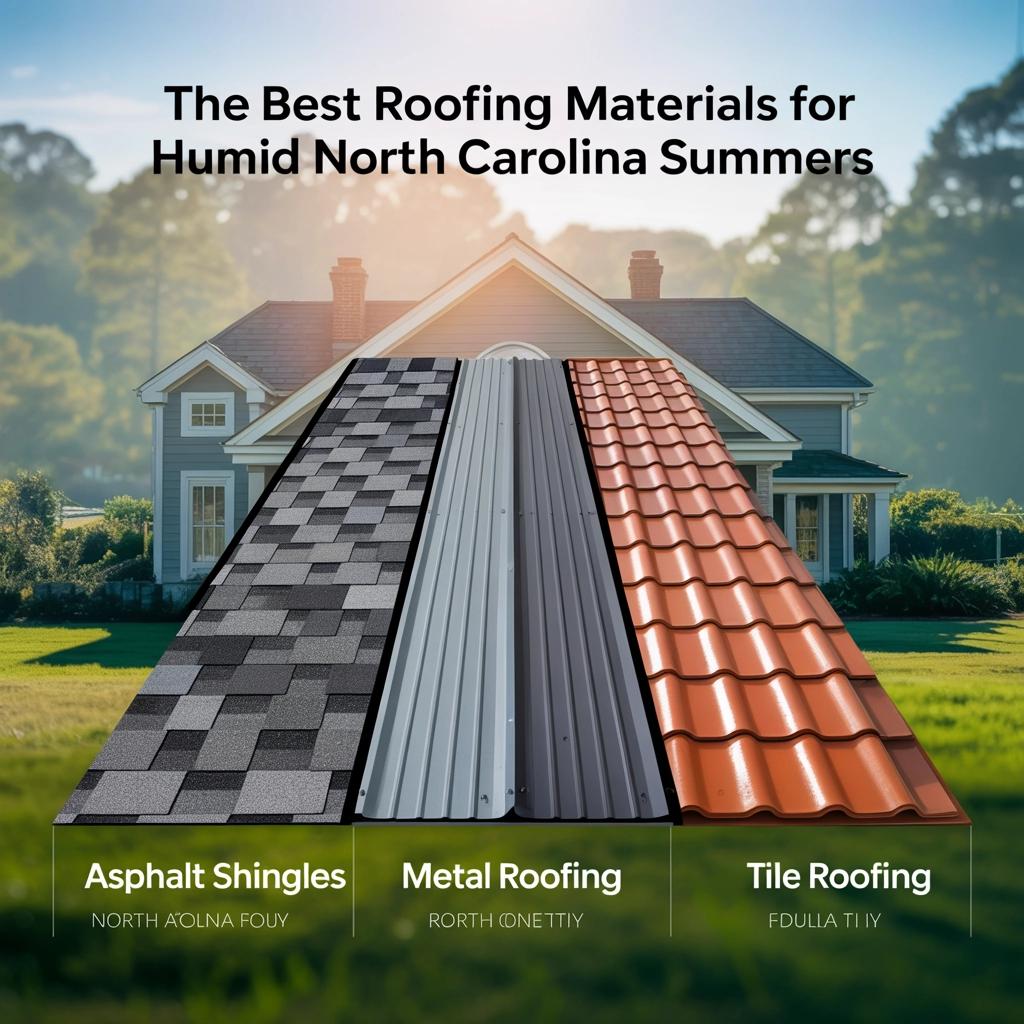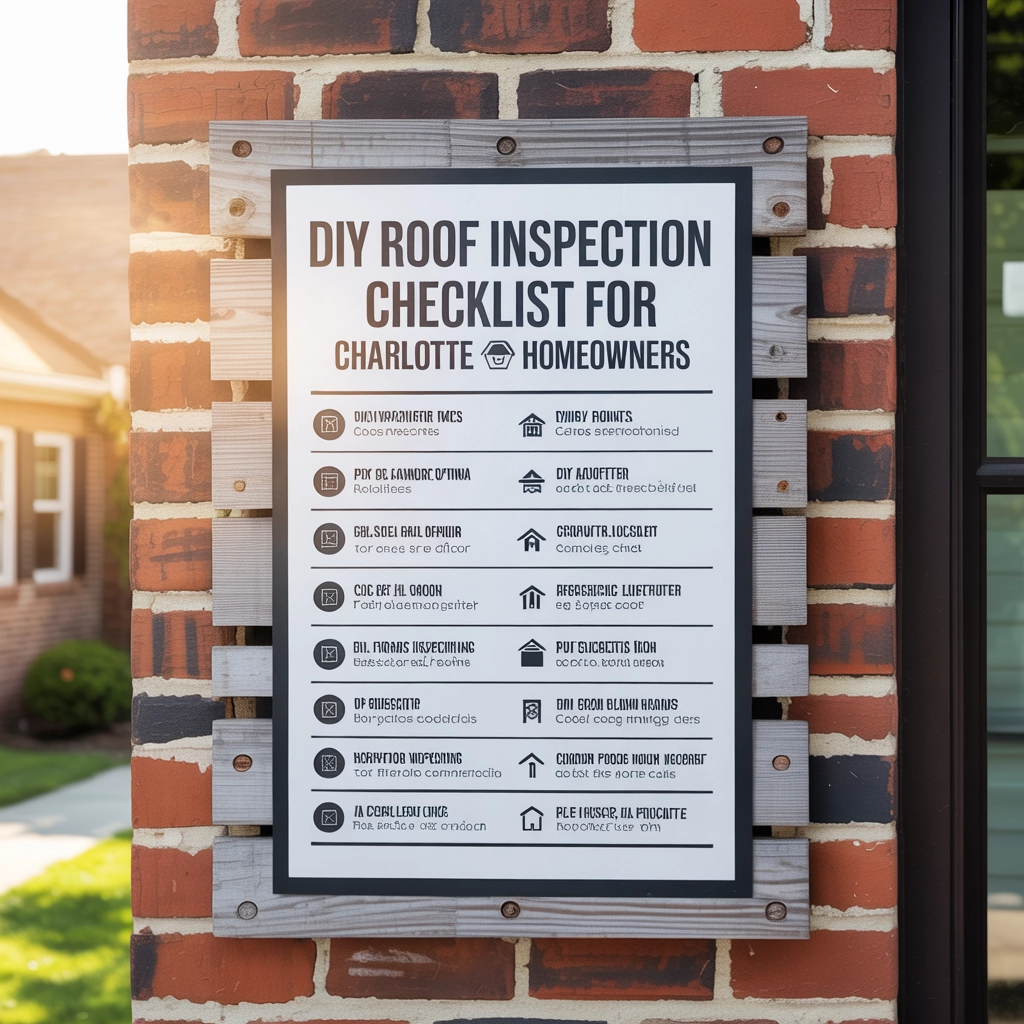Living in North Carolina means enjoying beautiful landscapes and a rich cultural heritage. But it also means dealing with those notoriously humid summers that can wreak havoc on your home—particularly your roof. When temperatures climb and humidity levels soar above 80%, your roofing materials face a perfect storm of moisture, heat, and occasional tropical systems that can accelerate deterioration.
At Best Roofing Now, we've helped thousands of North Carolina homeowners choose materials that stand up to our unique climate challenges. Let's explore the best options for keeping your home protected and energy-efficient during those sticky summer months.
Understanding North Carolina's Climate Challenges
North Carolina's climate presents several specific challenges for roofing materials:
- High Humidity: Average summer humidity levels between 70-80% create ideal conditions for mold, mildew, and algae growth
- Intense Heat: Summer temperatures regularly exceed 90°F, causing thermal expansion and contraction
- Sudden Storms: From afternoon thunderstorms to hurricane season threats, roofing materials must withstand rapid weather changes
- UV Exposure: Extended daylight hours intensify UV radiation that breaks down traditional roofing materials
"The combination of heat and humidity in North Carolina creates one of the most challenging environments for building materials," explains our lead roofing specialist. "Materials that might last 30 years in drier climates often need replacement in just 15-20 years here."

Top Roofing Materials for North Carolina Homes
1. Metal Roofing: The Humidity Champion
Metal roofing consistently ranks as our top recommendation for North Carolina's climate, particularly in areas that experience both high humidity and storm threats.
Key Benefits:
- Superior Moisture Resistance: Unlike porous materials, metal doesn't absorb water or support organic growth
- Exceptional Longevity: 40-70 year lifespan even in humid conditions
- Energy Efficiency: Reflects up to 85% of solar heat, reducing cooling costs by 20-25%
- Wind Resistance: Withstands hurricane-force winds up to 140 mph
- Low Maintenance: Requires minimal upkeep even in humid environments
Metal roofing comes in various styles, from traditional standing seam to metal shingles that mimic the appearance of slate or wood. The initial investment runs higher than asphalt (typically $8-14 per square foot installed), but the long-term value makes it extremely cost-effective.
For North Carolina homeowners seeking maximum durability and energy efficiency, explore our residential roofing options featuring premium metal systems.
2. Synthetic/Composite Shingles: Modern Moisture Fighters
Synthetic roofing materials represent the cutting edge of roofing technology, engineered specifically to address challenges like humidity and heat.
Key Benefits:
- Superior Mold Resistance: Advanced polymers resist organic growth even in high humidity
- Authentic Appearance: Modern composites convincingly mimic slate, wood, or tile
- Impact Resistance: Withstands hail and storm debris common in summer storms
- UV Stability: Enhanced resistance to sun damage compared to traditional materials
- Lightweight: Doesn't require structural reinforcement like heavier options
"Synthetic materials have revolutionized roofing in humid climates," notes our installation manager. "They give homeowners the aesthetic they want without the moisture vulnerabilities of natural materials."
These innovative materials typically cost between $7-12 per square foot installed and carry warranties ranging from 30-50 years.
3. Clay or Concrete Tiles: Time-Tested Heat Handlers
For homeowners seeking a distinctive Mediterranean or Spanish colonial look, tile roofing offers excellent performance in hot, humid conditions.
Key Benefits:
- Natural Cooling Properties: The shape and density of tiles create natural ventilation
- Extreme Durability: 50+ year lifespan even in harsh conditions
- Moisture Resistance: Doesn't support mold or algae growth
- Fire Resistance: Class A fire rating provides additional safety
- Color Retention: Minimal fading even with intense UV exposure
The primary considerations with tile are weight and cost. Most homes require structural reinforcement to support tile's weight (usually 8-10 pounds per square foot), and installation costs run between $10-18 per square foot. However, the exceptional durability makes tile cost-effective over its lifetime.

4. Premium Asphalt Shingles: Budget-Friendly Options
While basic asphalt shingles aren't ideal for humid climates, premium architectural or algae-resistant varieties offer improved performance for budget-conscious homeowners.
Key Benefits:
- Algae Protection: Copper-infused granules inhibit algae and moss growth
- Enhanced Wind Ratings: Premium versions offer 110-130 mph wind resistance
- Improved UV Resistance: Higher-grade materials resist sun damage longer
- Affordability: Typically $4-7 per square foot installed
- Easy Repairs: Simple to repair or replace damaged sections
When choosing asphalt, look specifically for products with "AR" (algae-resistant) designations and enhanced warranties for humid climates. Our Landmark and Presidential shingle options offer superior protection compared to standard materials.
5. Cool Roof Technologies: Energy-Saving Innovations
For maximum energy efficiency in North Carolina summers, cool roof technology provides substantial benefits regardless of base material.
Key Benefits:
- Reduced Heat Absorption: Specialized coatings reflect up to 80% of solar radiation
- Lower Cooling Costs: Can reduce summer cooling expenses by 15-30%
- Extended Roof Life: Less thermal stress means longer material lifespan
- Compatible Upgrades: Can be applied to existing roofs in many cases
- Tax Incentives: May qualify for energy efficiency rebates or incentives
Cool roof options typically add $1-3 per square foot to base material costs but often pay for themselves through energy savings within 3-7 years.
Installation Considerations for Humid Climates
The best materials can still fail prematurely without proper installation techniques specific to humid environments:
1. Enhanced Ventilation
Proper attic ventilation is crucial in humid climates. A well-designed system allows moisture to escape rather than condensing on roofing components. Our installations include:
- Ridge vents along roof peaks
- Soffit vents under eaves
- Power ventilators when necessary
- Proper insulation to prevent temperature differentials
2. Moisture Barriers
We install premium underlayment systems that provide:
- Secondary water protection
- Enhanced breathability to prevent trapped moisture
- Tear resistance during installation
- Extended UV exposure protection
3. Flashing Details
Areas where roofing meets walls, chimneys, or other protrusions require special attention in humid climates:
- Enhanced step flashing at wall intersections
- Counter flashing at chimneys and vertical surfaces
- Reinforced valley protections
- Premium sealants designed for temperature extremes

Maintenance Tips for Maximum Longevity
Even the best roofing materials benefit from regular maintenance in North Carolina's climate:
Quarterly Visual Inspections
- Check for loose or damaged sections
- Look for early signs of organic growth
- Inspect flashing and sealants
- Examine gutters and downspouts for proper drainage
Annual Professional Assessment
- Comprehensive examination of all components
- Cleaning of any early organic growth
- Sealant renewal where necessary
- Gutter cleaning and maintenance
"Most premature roof failures we see aren't from material defects but from deferred maintenance," explains our service manager. "Simple quarterly inspections can literally double your roof's effective lifespan."
Making Your Final Decision
When selecting the ideal roofing material for your North Carolina home, consider these factors:
1. Long-Term Budget
While metal and synthetic materials have higher upfront costs, their extended lifespan and reduced maintenance make them more economical over time. Calculate your "cost per year" rather than focusing solely on installation price.
2. Architectural Style
Different home styles complement different roofing materials:
- Colonial or traditional: Premium asphalt or synthetic slate
- Modern or contemporary: Standing seam metal
- Mediterranean or Spanish: Clay or concrete tile
- Craftsman or bungalow: Synthetic wood shakes
3. Energy Priorities
If reducing cooling costs is a primary concern, prioritize reflective materials like metal or cool roof technologies.
4. Location-Specific Factors
Coastal areas face different challenges than inland regions:
- Coastal: Prioritize salt-resistant materials and extreme wind ratings
- Urban: Consider heat island effects and noise reduction properties
- Wooded areas: Select materials resistant to moss, falling debris, and fire
Conclusion: Our Top Recommendations
After installing and maintaining thousands of roofs across North Carolina, our recommendations for humid summer conditions are:
Best Overall Value: Metal roofing systems offer the optimal balance of longevity, performance, and lifecycle cost for most North Carolina homes.
Premium Performance: Synthetic slate or shake provides exceptional humidity resistance with unmatched aesthetic appeal.
Budget-Conscious Choice: Algae-resistant architectural asphalt shingles with enhanced ventilation systems.
The right choice ultimately depends on your specific home, budget, and priorities. Our team at Best Roofing Now specializes in helping North Carolina homeowners navigate these decisions with free consultations and detailed proposals that consider your unique situation.
Ready to upgrade your roof before the humidity takes its toll? Contact our services team today for a comprehensive assessment of your home's needs and a customized recommendation for materials that will stand the test of time—and humidity—in beautiful North Carolina.


